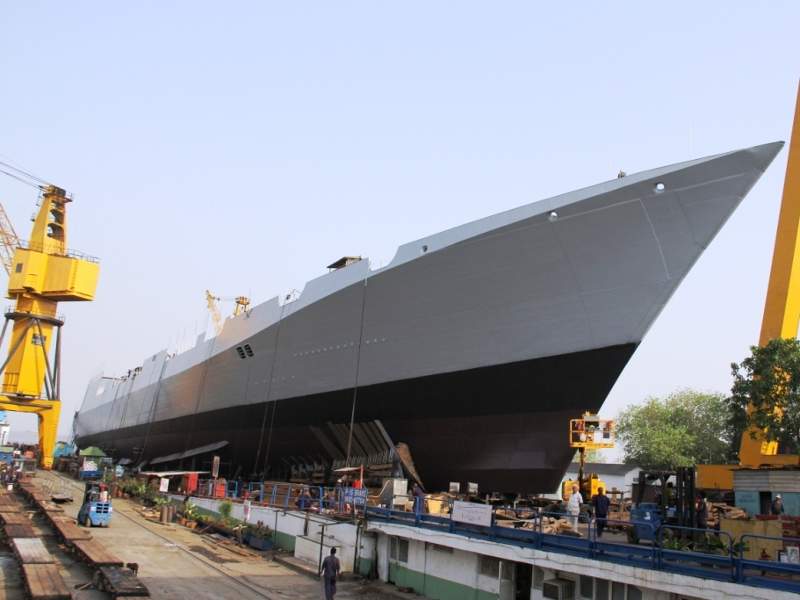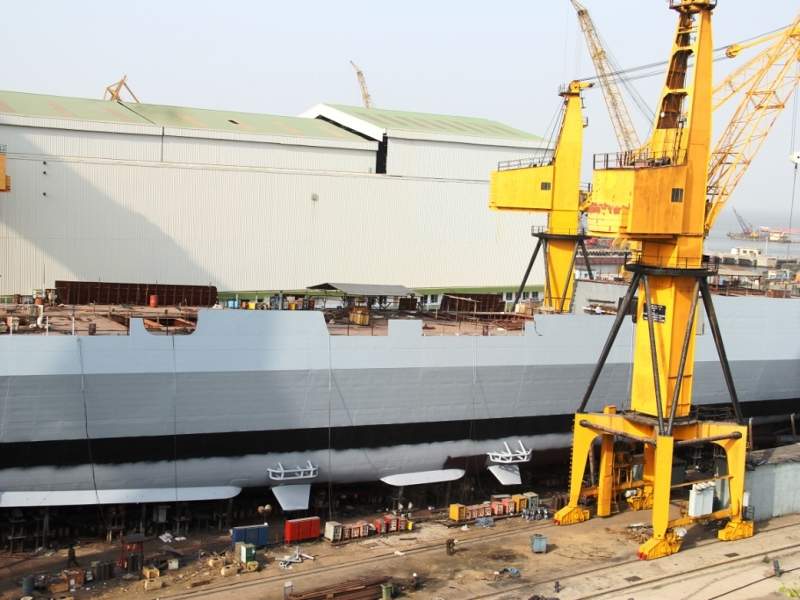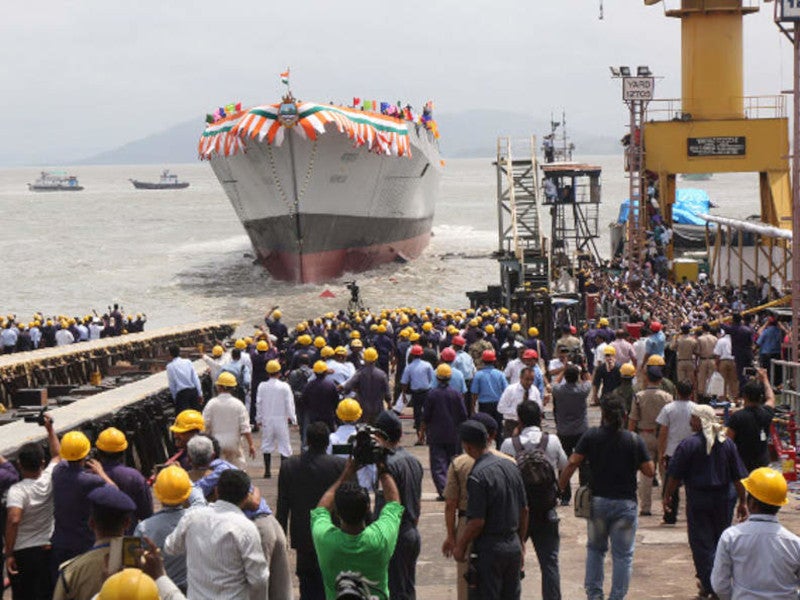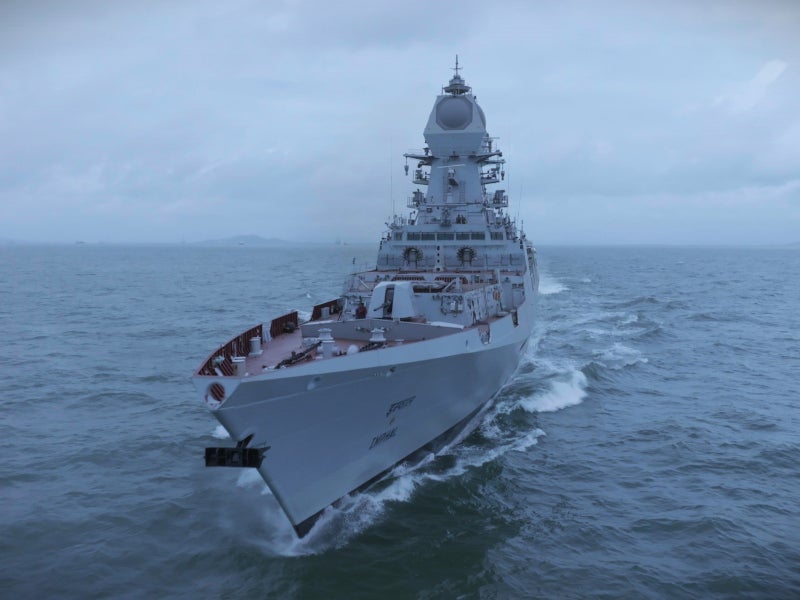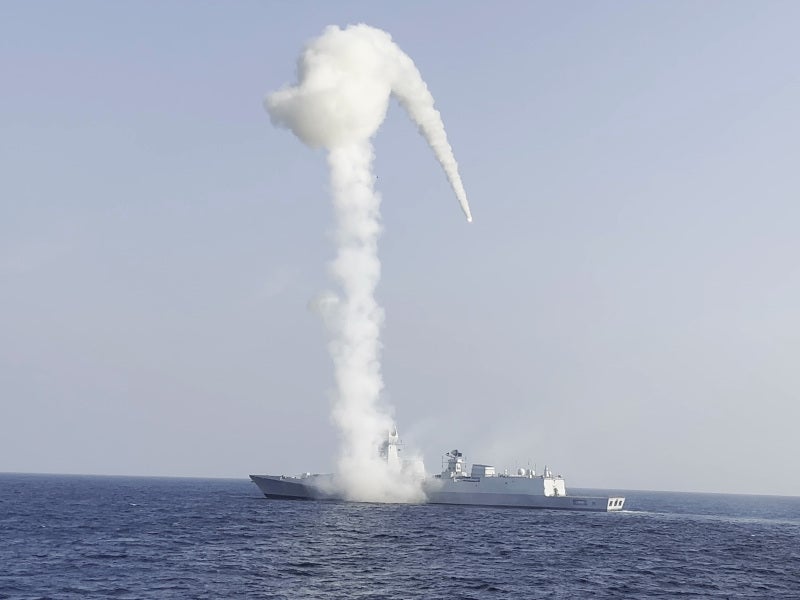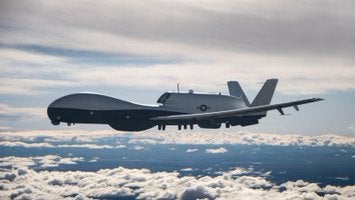The Project 15B stealth guided-missile destroyers, also known as the Visakhapatnam class destroyers, are the next generation of destroyers developed for the Indian Navy.
The contract for the construction of four Project 15B destroyers was signed in January 2011 by Mazagon Dock Shipbuilders.
The four ships are named after major Indian cities: Visakhapatnam, Mormugao, Imphal and Surat.
Project 15B development timeline
The keel for the first Project 15B ship, named INS Visakhapatnam (Y 12704), was laid in October 2013, and the vessel was launched in April 2015. INS Visakhapatnam was commissioned into the Indian Navy in November 2021.
The keel-laying ceremony of the second destroyer in class, INS Mormugao (Y 12705), was held in June 2015, and the vessel was launched at the Mazagon Dock’s shipyard in Mumbai in September 2016. INS Mormugao joined the Indian Navy in December 2022.
The keel for INS Imphal (Y 12706), the third destroyer, was laid in May 2017, and the ship was launched in April 2019. The destroyer was commissioned into the Indian Navy in December 2023.
INS Surat (Y 12707), the fourth destroyer, was launched in May 2022. It is expected to be commissioned in 2024.
Project 15B destroyers design and features
The Project 15B ships retain the hull design of the Kolkata-class destroyers but incorporate advanced stealth features and a high degree of automation. Designed indigenously by the Warship Design Bureau, the vessels offer improved survivability, sea keeping and high manoeuvrability.
The sleek hull design, combined with radar-transparent deck fittings, makes the vessels difficult to detect.
Their significant indigenous content of 75% reflects the nation’s self-reliance in warship design and shipbuilding.
Each vessel measures 163m long and 17.4m wide, with a displacement of 74,300t. The ships are operated by a crew of more than 300, including 50 officers and 250 sailors. The accommodation and working areas offer superior ergonomics and habitability.
The destroyers feature multiple fire zones, battle damage control systems and distributional power systems for improved survivability and reliability in emergent conditions. The total atmospheric control system on board the vessel protects the crew from chemical, biological and nuclear threats.
The ships also feature an integrated platform management system, an automated power management system, and foldable hangar doors.
Combat management system
The ship integrates a modern combat management system that conducts threat evaluation and allocates the resources based on the tactical picture compiled and the weapons package available on board. The ship data network carries the data from all sensors and weapons on board.
Project 15B weapon systems
The destroyers are equipped with a close-in weapon system and bow-mounted sound navigation and ranging.
The ship’s primary firepower consists of vertically launched Barak 8 surface-to-air missiles and BrahMos surface-to-surface missiles for engaging shore and sea-based targets over long ranges.
On board the vessel, two 16-cell vertical launchers are capable of launching a total of 32 Barak 8 missiles, while two eight-cell universal vertical launcher modules allow for the launch of 16 BrahMos missiles.
The forward bow deck is fitted with a 127mm main gun, while the vessel is installed with four AK-630 30mm guns for close-point defence capability. The destroyer is also armed with indigenously developed 533mm torpedo launchers and RBU-6000 anti-submarine rocket launchers to provide anti-submarine warfare capability.
Helicopter handling system
The aft helideck of the P 15B ships supports the operations of two multi-role rotorcraft, including Sea King or HAL Dhruv helicopters.
The state-of-the-art rail-less helicopter traversing system on board the vessel ensures efficient helicopter handling on the deck. Additionally, the vessels feature a hangar facility to accommodate two helicopters.
Propulsion system
The ships are equipped with a combined gas and gas configuration, which integrates four gas turbines.
The power plant also integrates two diesel engines and four generator sets. The propulsion system allows the ships to achieve speeds of more than 30k and a maximum range of 4,000 nautical miles.
Contractors involved
Bharat Electronics (BEL), Bharat Heavy Electricals (BHEL), Larsen & Toubro (L&T), Godrej and Marine Electrical are among the contractors involved in the construction of the ships.
BrahMos Aerospace supplied the BrahMos missiles, while L&T supplied the torpedo tube launchers.
BHEL supplied the 76mm rapid gun mount, while BEL supplied the medium-range missiles.

